How and when to cover roses for the winter in the Moscow region
Content
Shelter methods
There are several opinions on how to prepare roses for winter, but usually the shoots are cut in accordance with the requirements of the variety, the leaves are removed not only from the bush, but also nearby, and the top layer of soil is dug up. If the plants are sick, then it is advisable to destroy the plant remains, and replace the ground under them, at least a layer 10 cm thick.  The shoots of climbing roses are removed from the supports, the branches of the scrubs are carefully bent to the ground, sometimes you even have to dig in the roots on one side in order to lay the shoots.
The shoots of climbing roses are removed from the supports, the branches of the scrubs are carefully bent to the ground, sometimes you even have to dig in the roots on one side in order to lay the shoots.
Prepared cut plants can be covered in different ways for the winter.
In regions with mild winters, where there is no severe frost, roses can perfectly overwinter under leaves, sawdust, wood shavings, which are covered with bushes to a height of 20 - 25 cm. From above, they are covered with spruce branches. Spruce spruce branches chases away rodents, which are also preparing for wintering, traps snow, keeps an air cushion above the plant.
To cover roses for the winter in the Moscow region, a thick non-woven fabric is used, it preserves flowers well if you wrap the whole bush at once. But thorny shoots quickly render it unusable, and buying a new one every year is not economical.
The best quality shelter is obtained if there is a lot of air between it and the bush, and condensation does not collect. It is built using a wooden box with large slots, which is used to cover a bush, or a specially prepared frame. The frame is made of metal wire (only in winter the shoots should not touch the metal) or greenhouse arches are installed over the rose. The frame, whatever it may be, is covered on top with non-woven fabric or kraft paper, and a film is placed on top to protect it from moisture. Such a shelter can be built in advance, installed over the rose, but left open on the sides, and then closed with the onset of real frosts. All the covering material is pressed with something to the ground so that it is not blown off by the wind or it does not slide with the snow, but leave the possibility of airing. You need to approach wintering consciously, regularly check the condition of the plants, and not “close and forget”.
It is the construction of such an air-dry shelter that can guarantee the health of overwintered roses. And you cannot cover plants with paper or cardboard, such material will quickly get wet and, instead of protection, will bring dampness and cold to the shoots. You cannot cover the bushes with one film, because under it the buds heated by the sun will feel the greenhouse conditions and can grow, and then, of course, freeze as soon as the sun stops shining on them.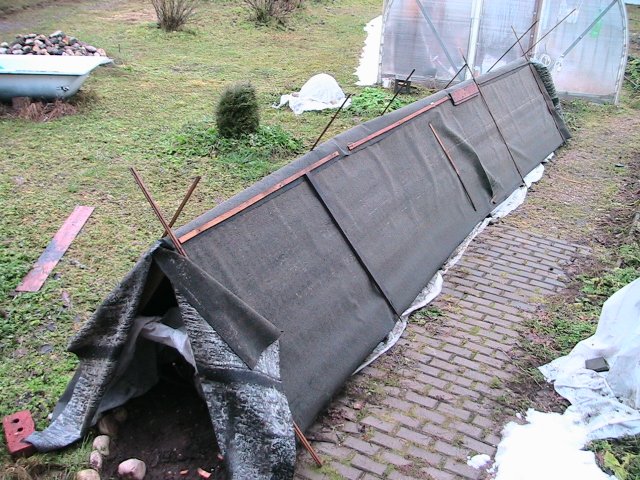
Many growers lay wooden boards under the shoots, and cover them with tar paper on top - it is very important to protect the roses not so much from the frosts themselves, but from dampness in cold weather.
Video "How to trim in front of the shelter"
From the video you will learn how to properly prune roses before winter.
Lutrasil Hide
Now there are many new materials that are sold in hardware stores, they compare favorably with all others in their ability to pass air and often light, but retain moisture. For the preservation of plants in winter, it is good to use non-woven materials such as lutrasil, spunbond or vapor barrier membranes. Outwardly, they resemble non-woven fabric, they come in different densities. Lutrasil is interesting in that it allows moisture vapor to pass through, but retains drops, it is very convenient for covering roses - condensation will not collect under it, and light passes through it from above, but not water.
Lutrasil should not wrap each shoot, it is better to cover the whole bush or even a flower bed with it, let a whole company of perennials winter next to the roses.
It will show its best qualities when there is an air gap between it and the plants. The best way is to build a suitable frame, cover it with lutrasil (you need to take the thickest one and even roll it in half) so that you can leave the ends open, and be able to open it all winter for airing and checking the condition of the plants.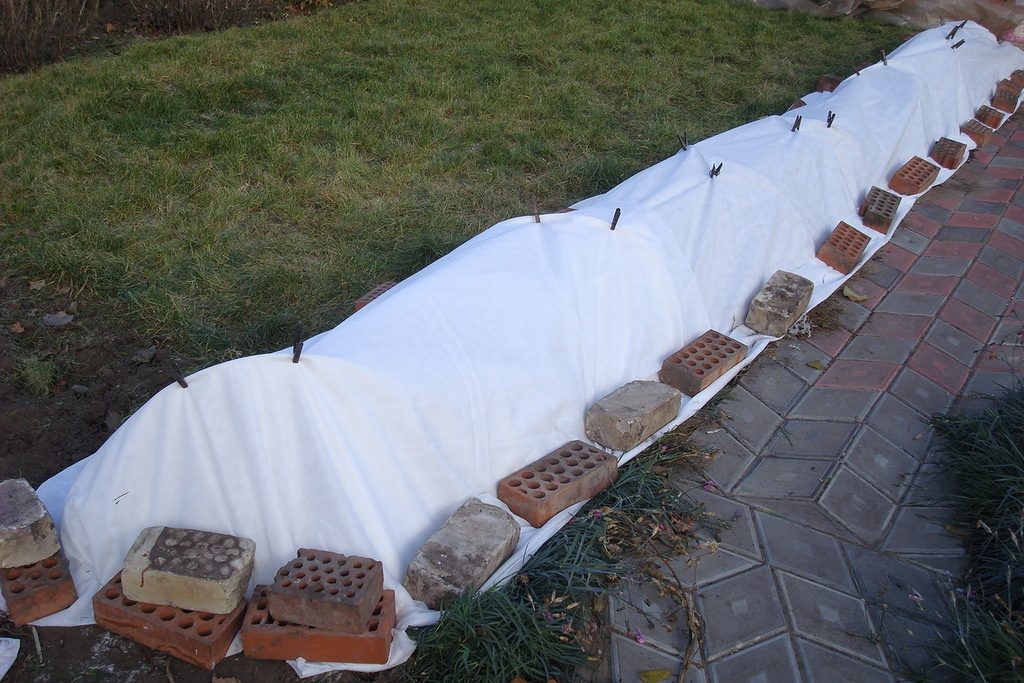
It is recommended to cover the bushes in dry weather, the roots and shoots must be covered with dry material, even if it is just earth with sand. This can be difficult if it rains in the fall. And such a frame with lutrasil at the top can perfectly close the roses from the rain, but you can close such a shelter tightly later, let the flowers stand as if under an umbrella.
How to hide in the suburbs
Preparation of roses for the period of rest in the suburbs begins in the summer. It is not for nothing that nitrogen fertilizers are recommended to be applied only in spring and in the first half of summer - without them, plants slightly slow down their activity. In September, they are fed with phosphorus and potassium, which will help to gain strength for the long winter. Repeatedly or long blooming roses at the end of summer are allowed to grow fruits, the petals are removed from the fading inflorescences, but they are not cut off completely, because the ripening of the fruits itself already prepares the plant for the dormant period.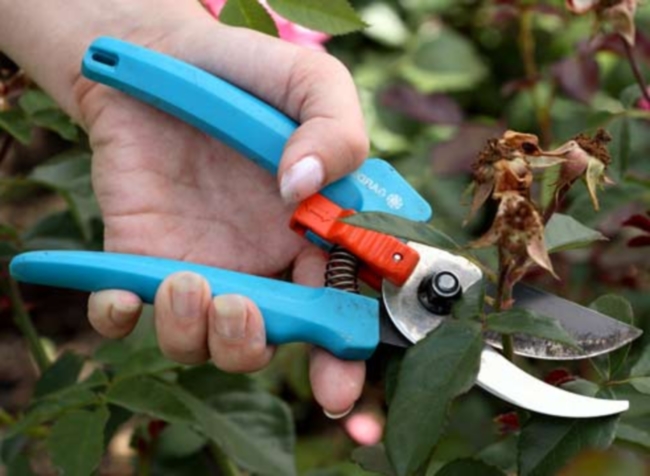
Already in October - November, you need to cut the roses for the winter, spud, bend the shoots to the ground and cover them with covering material. Not all roses can be laid on the ground or on some kind of substrate, they often rise up to 1 meter. These activities must be carried out in dry, cool weather, and you need to cover for the winter with the onset of frosts down to -10 degrees and below. But when the cold rains start charging in October, it's hard to get all the preparatory work done. And if you cover the roses in November, as it is recommended to do in the Moscow region, then it is quite possible that a thaw will come soon. This is where a skeleton with lutrasil can help. After all, having built a frame over the bush and covering it with lutrasil, you can protect the rose and the ground around the bush from rain. And you don't need to close it tightly, let the plants breathe this moist coolness.
You can completely close such a structure over the rose in November, as expected, with the onset of frost. And if unexpected warmth comes, no one will bother to open the roses for airing. Of course, for such manipulations, it is best to lay the material not on the shoots, but to make a frame of strong wire over them - this will also protect the shoots from injury under the thickness of the snow, since the frame and lutrasil will take all its weight.
Warming of different types
It will not be equally possible to shelter all types of roses from the cold, not only because they have different requirements, but they themselves are very different. How can a climbing rose with shoots up to 3 m and small ground cover bushes be equally covered? Or a tall standard rose?
Almost all park roses tolerate winter well. Usually they are huddled 25 cm with dry earth or sand. If the winter is expected to be very cold or with little snow, then they are covered with spruce branches on top, some even put nonwoven material on it.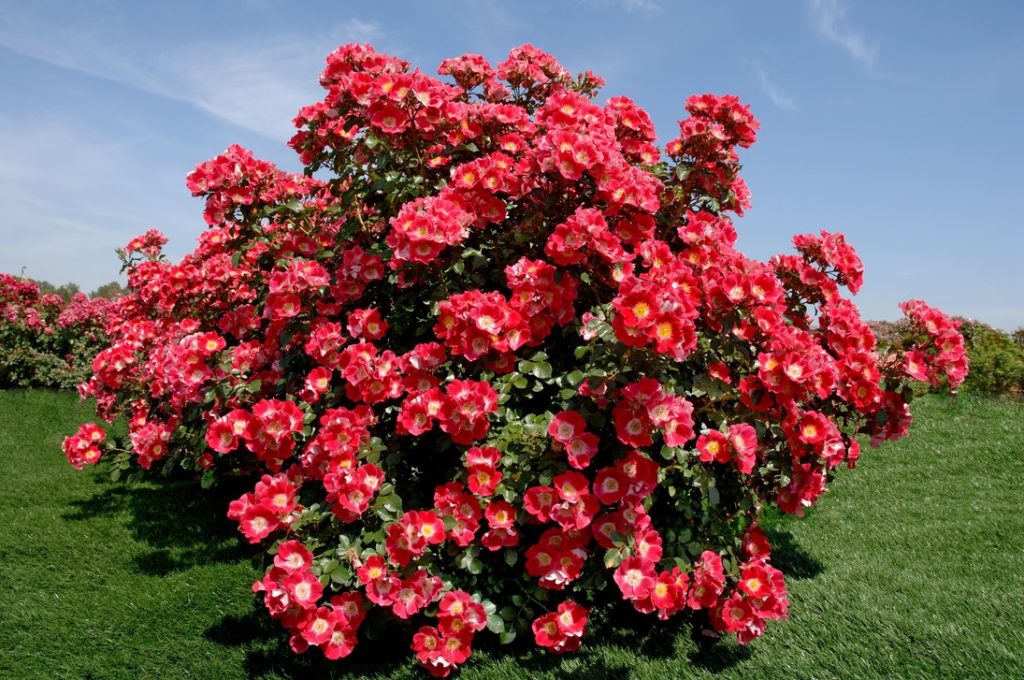
Climbing roses are removed from the supports, laid on the ground or on a wooden substrate, covered with spruce branches on top, and a frame is already installed above it.Some growers dig a ditch in the ground and put shoots in it, covering it with sawdust, dry leaves and spruce branches on top. Of course, the ground must be dry. Shrubs need to be covered in a similar manner, but their shoots do not bend as easily. In order to put a tall bush rose on the ground, you can dig it up on one side and sprinkle the roots thoroughly with sand, earth or sawdust. This will help lay down the shoots and cover them.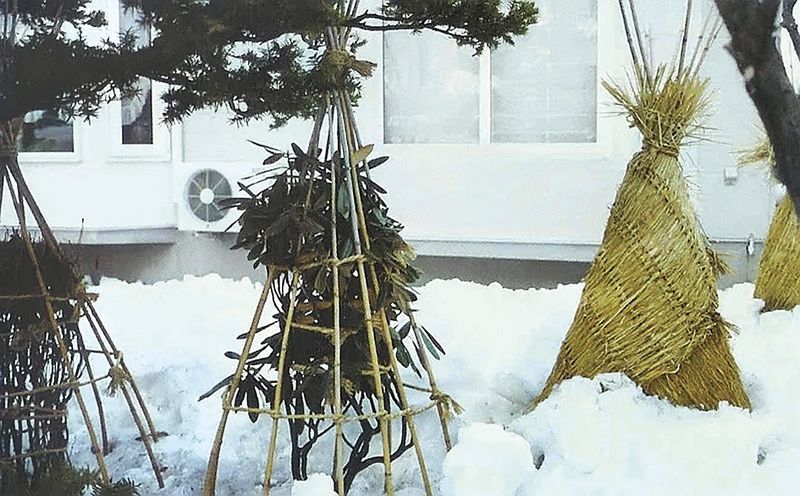
Standard roses are sometimes treated in the same way. But more often they are covered the way they grow - the crown is wrapped in straw or spruce branches, tied with burlap, spudded with earth, sand, sawdust, compost from below. Thus, they hibernate where frost -20 degrees and icy winds are not expected, this method is suitable for mild winters. If it is expected to be harsh, then the roses are simply dug up and transferred to a suitable room.
When to close roses for the winter
You need to prepare roses for winter ahead of time, but you do not need to cover them ahead of time. The most delicate rose will not freeze when the temperature drops to -5 degrees for a short time. If in the fall, as it was in 2021, it got cold early, and then it became warm enough again, then you should not rush. It is believed that you need to cover when the onset of constant frosts -7 degrees and below. Usually in the Moscow region it is advised to do this in early November.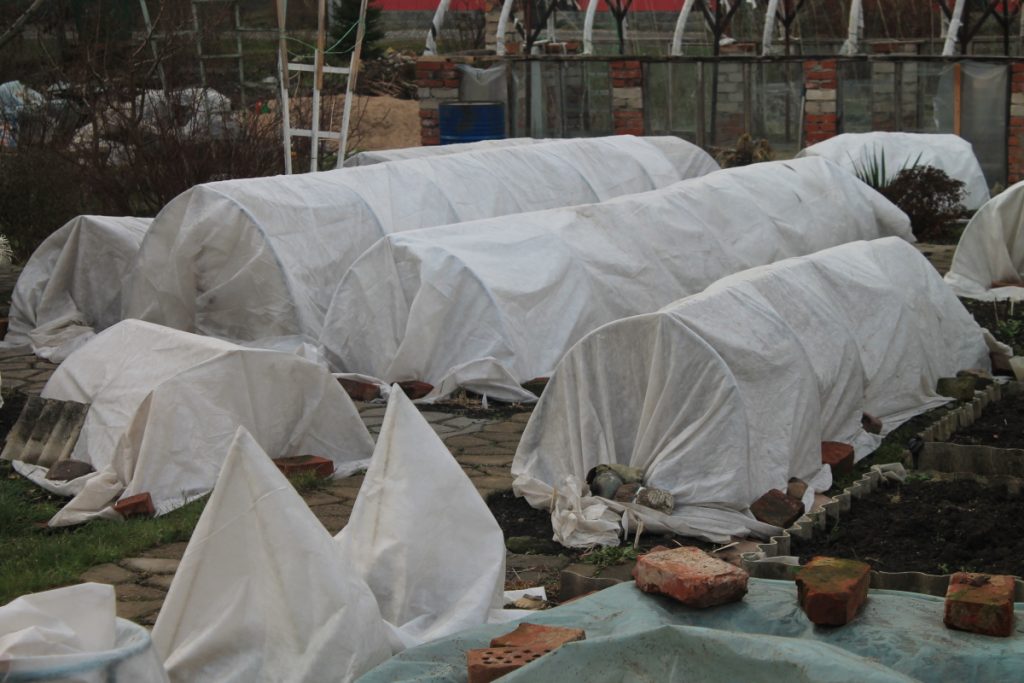
When using lutrasil, you can choose dry weather in October and cover the bushes partially, and then close them completely with the arrival of frost. It would be nice to build a frame under which the flowers will hide from the October rains, and you can insulate on top much later.
Video “Correct Shelter Techniques”
From the video you will learn how best to snatch the bushes for the winter.



